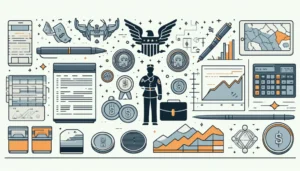If you’re working toward financial independence (FI), chances are you’re looking to optimize your expenses. By reducing the amount of money you spend each year, you reduce the amount of money you need in your nest egg to reach financial independence.
The average household spends over $1,300 in energy a year, usually on heating and cooling. However, your energy bill is highly dependent on your personal habits, your particular home, and the state you live in. You can lower these costs if you’re willing to invest some money in energy efficiency improvements up front or if you’re simply willing to change a few habits.
Along with my own research, I asked the ChooseFI Facebook group for their best tips to save money on your electric bill and compiled the best responses. If you’d like to read everyone else’s thoughts or would like to add your own, here’s a link to the post in the Facebook group.
Reduce Waste
Not paying for electricity you aren’t using is a great way to cut costs without impacting your life at all. Many people noted that leaving lights and ceiling fans on after you’ve left the room is a common issue. A couple of members mentioned solutions that can help solve this problem.
Motion Sensor Light Switches
Motion sensor light switches will automatically turn the light switch off if it doesn’t sense movement in the room after a certain period of time. If you often leave lights or ceiling fans on in rooms you’ve left, this could help you cut your electricity bill, especially if you’re still using incandescent light bulbs.
Switch To CFL OR LED Lightbulbs
Speaking of incandescent lightbulbs, switching to CFL or LED lightbulbs could offer huge savings. Many LED bulbs use roughly 10-20% of the electricity an old incandescent bulb uses. If you switch all of the bulbs in one area, you won’t even notice the color difference after a while.
Get Your Family On Board
You can even incentivize your kids to cut out wasted electricity from leaving lights, ceiling fans, and other items on when they leave a room. One group member said they charge their kids $1 every time they leave a light on in a room they aren’t in. I think this is genius. It should help their kids learn good energy conservation habits and pay the electric bill at the same time.
Reduce Phantom Usage
Phantom usage in your home isn’t the result of a poltergeist, it’s the small amount of wattage electronics use up even when we aren’t actively using them. Those little draws can add up to dollars on your electric bill. According to Energy Smart, “Phantom energy can account for 15% or more of the total electricity used by these gadgets.”
Unplug What’s Not In Use
Certain electronics need to stay plugged in constantly. However, there are plenty of things we keep plugged in out of sheer laziness. Likely, there are TVs you rarely use, extra computer monitors, room fans, and kitchen appliances, that can stay unplugged until you’re ready to use them.
Even items such as hair dryers and unused phone charging cords draw a small amount of electricity and add up.
One great tip is to plug all related items into a power strip. This way you can turn them all on and off at the same time. For example, plug your computer, monitor, printer, etc into the same power strip (they probably already are anyway) and then you can easily unplug the whole group at once.
Get A Kill-A-Watt Monitor
Don’t think this extra step of unplugging stuff is worth the effort? You can find the biggest “energy vampires” in your house with a Kill-A-Watt monitor. Plug your turned off devices into this monitor and it will tell you how much electricity it’s using when not in use.
This will help you make the biggest impact when deciding what to unplug and what to not worry about.
Turn Down Your Hot Water Heater
Check your water heater to ensure it’s not dialed up too high. Turning down the temperature on your water heater can save you some cash, and you likely won’t notice a difference.
If you don’t already have one, installing an insulating blanket around your hot water heater can also help. Keeping the hot water hot for longer will reduce the amount of time your hot water heater needs to be working.
Optimize Your Heating And Air Conditioning Usage
According to the Department of Energy, heating and cooling accounts for 48% of the typical U.S. household’s electric bill. This leaves a ton of room to save money on your electricity usage.
Get A Programmable Thermostat
Group members were quick to point out that using a programmable thermostat could be a big money saver. Simply set the temperature warmer in the summer and cooler in the winter for periods when you aren’t home to start saving money.
You could also invest in a smart thermostat. An example of a smart thermostat is the Nest Thermostat and it is controlled via an app on your phone. You can set your thermostat to a timed schedule or to automatically go into energy saver mode when it detects the home is vacant.
Additionally, should you need to adjust the heating and cooling remotely, you can do that as well. We all have that family member who loves to crank up the heat and forgets about it!
Add Ceiling Fans
During the summer, ceiling fans can help you save even more money. Running a ceiling fan will usually allow you to bump the thermostat up a few degrees and still feel comfortable. The breeze will make you feel much cooler and help you save money in the process.
Draw The Blinds
It also helps to make sure your home isn’t building unnecessary heat during the day. If you aren’t in a room, make sure you keep the drapes closed to block out the light and the heat. Room darkening curtains offer the best energy savings. You can also block out the light by growing shade trees around your home.
Make It Personal
Finally, if you find yourself spending most of your time in one or two rooms of your home, it may make sense to get an individual room air conditioner or heater. That way, you can heat or cool the room you spend most of your time in and leave the temperature in the rest of the house at a more efficient setting.
Related: Are Solar Panels Worth The Investment
Optimize Your Appliances
The appliances you use, or don’t use, can have a huge impact on your electric bill. Little tweaks in how you use your regular appliances can lead to more savings.
Use A Toaster Oven
Your oven is an awesome money saving tool when you use it to cook food instead of eating out at a restaurant. However, most times you could save even more money by using a different appliance instead.
While a large oven is necessary for some meals, like a Thanksgiving turkey, you don’t need a full-size oven to bake a couple of chicken breasts. Instead of heating up a huge oven to cook something small, consider using a toaster oven instead. It heats up to full temperature much faster and the smaller space means less electricity will be used to cook the same meal.
Keep Your Fridge And Freezer Cold
Refrigerators and freezers have optimal settings, so be sure to read up on their energy efficiency recommendations. When putting food in the refrigerator, be sure your food has cooled off completely so your fridge doesn’t have to do extra work.
The freezer will be more efficient when it’s mostly full. So if you don’t keep a lot of food in the freezer, keeping a frozen jug or extra ice in the freezer area will help insulate the existing items.
Wash In Cold And Skip The Dryer When Possible
For laundry, select the options best suited to the load you are washing. And consider that opting for cold water in your laundry cycle. This will help save on electric usage and can also lead to a longer life for your clothing as well. When the dryer is needed, keep in mind that overfilling it will take clothes longer to dry and create more wrinkles.
For maximum savings on your electric bill, you could give up the clothes dryer all together. Honestly, a clothes dryer is a huge luxury. If you don’t need your clothes right away, simply hang them up on drying racks or a clothesline outside. The clothes will eventually dry and you won’t have to pay a penny in electricity to get the job done.
Related: Quirky Frugal Habits–Level Up Your Frugality
Hand Wash Your Dishes
Our dishwasher broke about five years ago and we never replaced it. We realized we were basically already washing the dishes by hand before putting them in the dishwasher. It was almost no extra work to just dry the dishes and put them away–skipping the dishwasher altogether.
Instead, we bought a mini-fridge and put it in the spot under the counter where the dishwasher goes. We keep drinks and snacks in there which means the big fridge gets opened much less frequently.
If you can’t live without your dishwasher, you can turn off the “heat dry” feature which will reduce your energy costs. And running your dishwasher when completely full can make the most of dishwashing cycle.
Related: Tips to Make Your Appliances Last Longer
Invest In Better Appliances And Maintain Them Properly
When it comes time to replace your appliances, it might be tempting to get the cheapest items possible or buy older models used on Craigslist. You might save more money buying appliances that are energy efficient that still fit in your budget. As most modern appliances have higher energy usage standards than their predecessors, you may spend more upfront but reap the benefits over the years.
Most appliances come with an EnergyGuide rating, to help you calculate what it takes to run. You’ll have to do the math to see if buying an older model really comes out ahead in the long run.
It’s important to keep up on maintenance for appliances as well. Maintenance costs a bit upfront but saves you more in energy usage and the life of your appliances. The Family Handyman has some great tips for DIY maintenance. Who knew those dryer sheets leave behind an invisible film on your dryer filter!
On average, you’ll need to change your air filter for your HVAC every 30-60 days. If you experience allergies or have pets that shed frequently you’ll want to change them out every 20 days. If your filters are clogged, your HVAC will have to work harder to set the temperature your thermostat is set to. If you are committed to doing this, FilterEasy will send you the filters you need on a schedule saving you time and money and your first shipment is free.
And don’t forget the lint trap in the dryer, cleaning it after every load helps the dryer work more efficiently.
Don’t Forget To Check With Your Utility Company
The last major category the ChooseFI Facebook group members suggested to save electricity was checking with your electric company for savings. In some areas, you can shop around to find the cheapest electricity provider.
Even if you can’t choose a different provider, check to see if your provider offers multi-rate billing which could lower your bill. Simply avoid using your biggest electricity hogs during peak price hours and you could save a great deal.
Electric companies often offer incentives to lower your electric use or upgrade to more efficient systems like HVAC systems. Some may even offer incentives if you decide to install solar panels on your home.
What’s even more awesome is that many electric companies will come out to your home and perform a free energy audit. They’ll look to see where you need to caulk windows and doors, where you may need additional insulation in your walls and attic, or suggest other ways you could save. They will also let you know about any rebates they have available to make their suggested changes.
Saving money on your electric bill doesn’t have to be difficult. Find at least a couple of suggestions above that will work for you and start saving on your electricity bill now. You’ll be glad you did.
Related Articles:
- Tips To Keep Your Water Bill Low
- Tips to Save on Landscaping Costs
- How to Lower Your Cell Phone Bill




